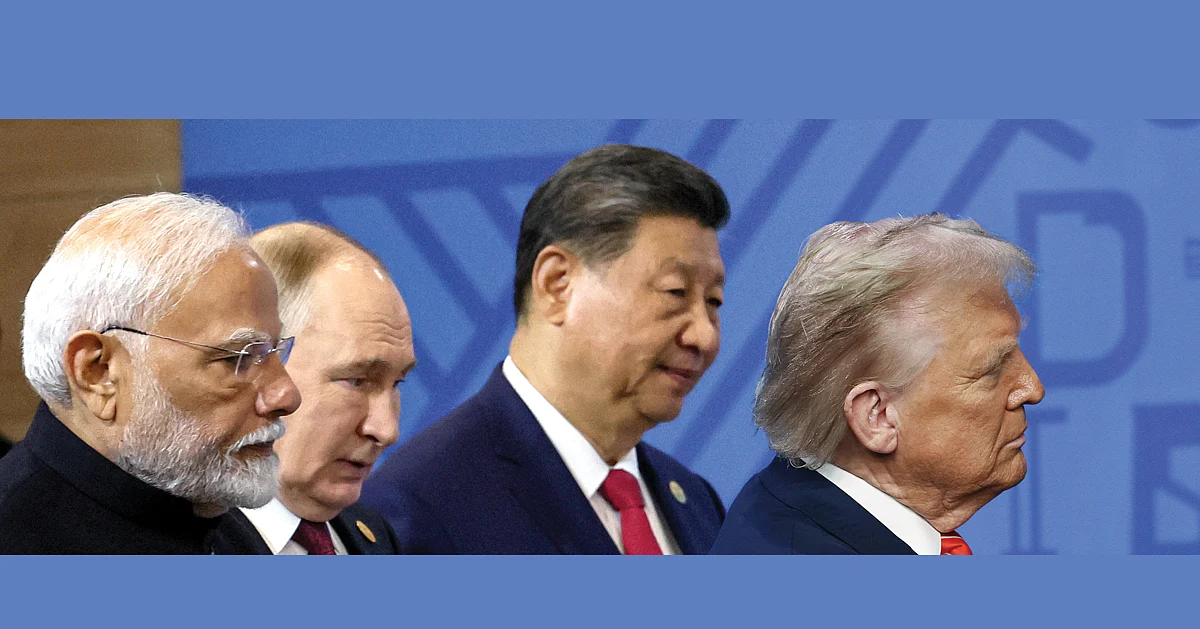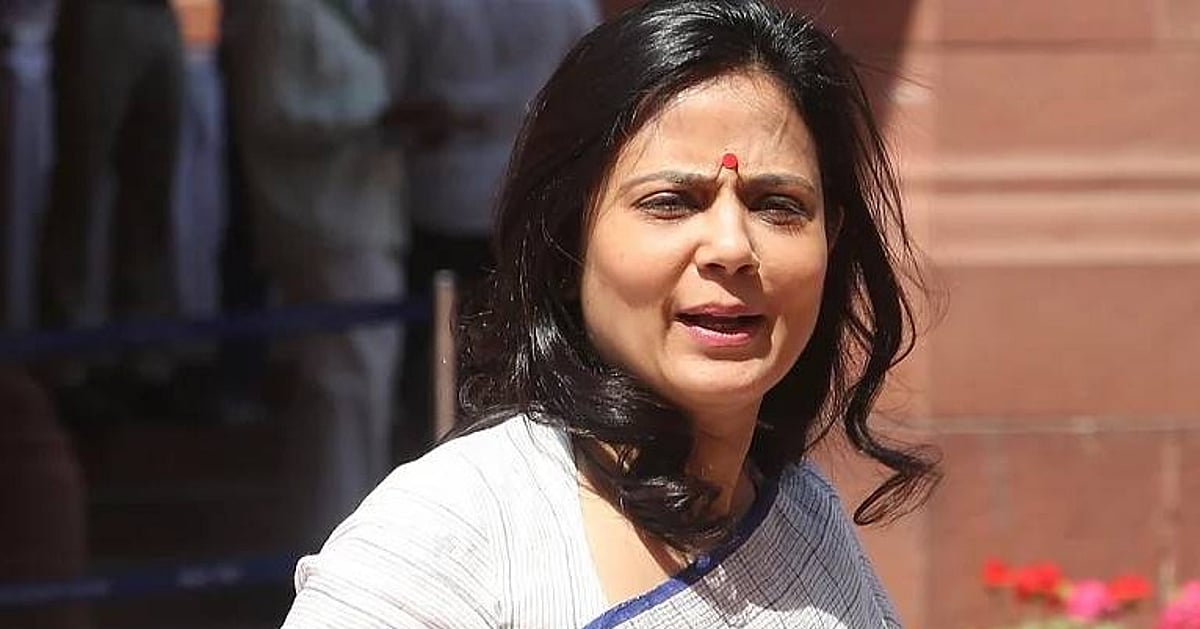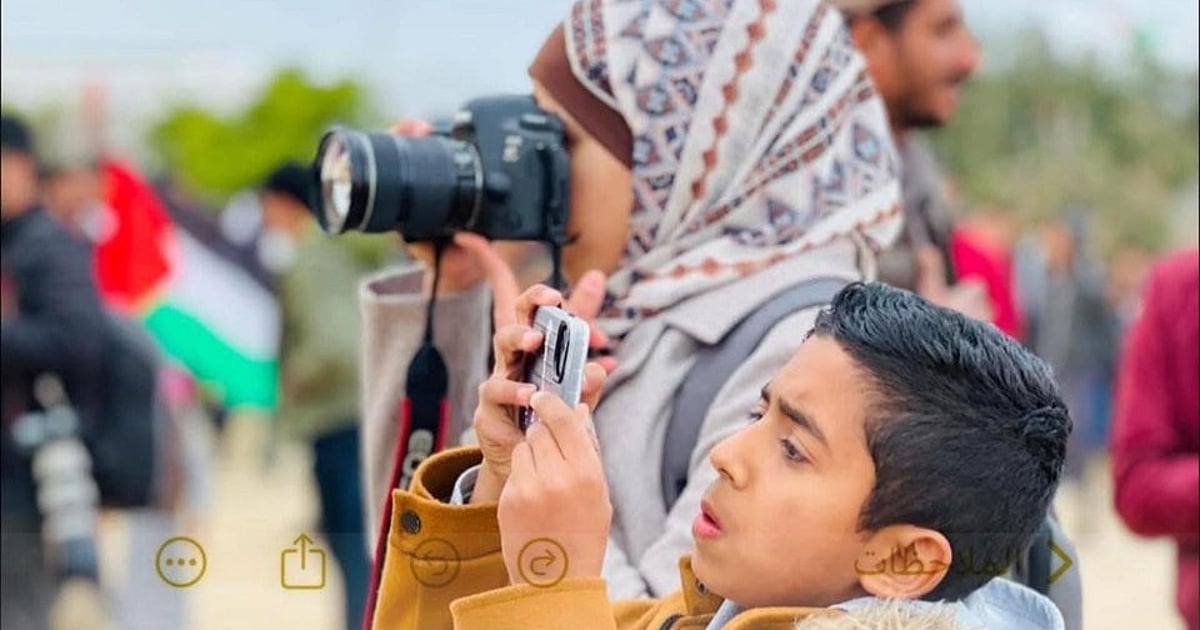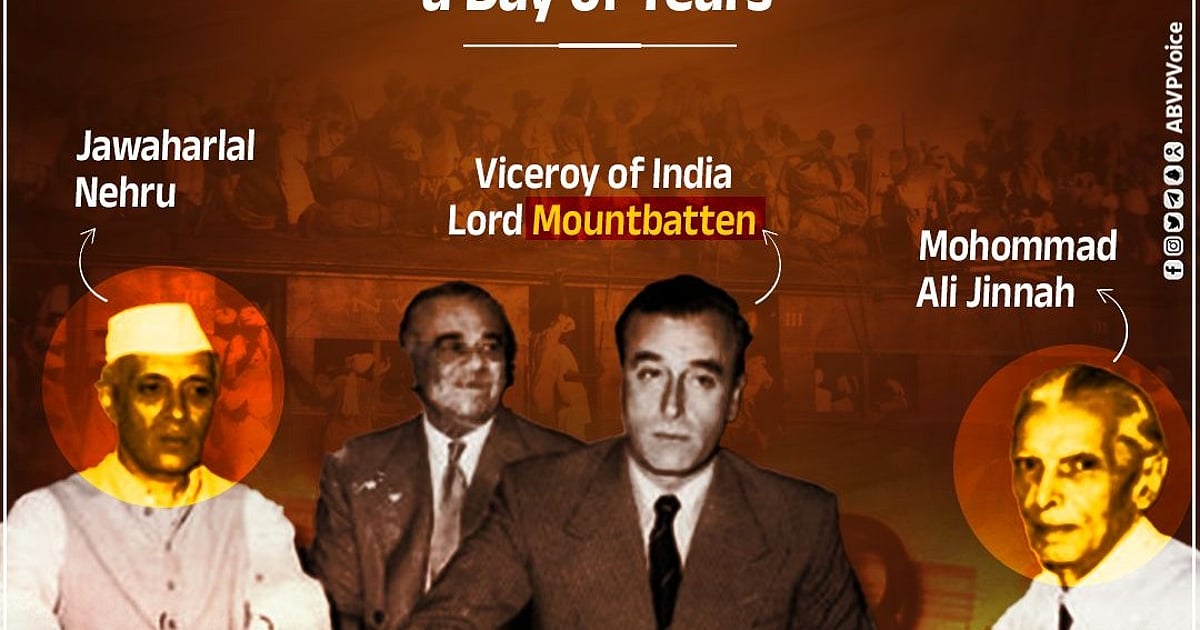National News
Outflow and friendly

For more than a decade, Narendra Modi sold himself as a person taking India to the global high table. His cheerleaders in media and academics also talked about a ‘Modi Siddhanta’ in foreign policy, possibly their endless foreign trips, stadium -shaped rallies with migrants and their television bears with leaders from Washington to Tokyo. Spin was crude, but the intention was clear: to package Modi as a global politician, which is praised abroad, fears by opponents and honored by colleagues.
The reality is a very tarnished, and India’s international stature has never diminished since independence. Under Modi, the country has rescued goodwill in the neighborhood, inviting enmity with powerful rivals, and is now facing derogatory soles with both Washington and Beijing. At a moment when the world is dividing into blocks and regional powers are cleverly hedging, India is isolated, without any reliable friends or permanent colleagues.
Grace is not more than Stark than Washington. Modi was going so far for him to openly campaign for him on Donald Trump, with an unforgettable slogan in 2019: ‘Now times, Tusrap GovernmentModi assured himself that his personal chemistry with Trump would provide strategic benefits. It was not.
In August 2025, Trump slapped 50 percent of tariffs on Indian goods, ending decades of deepening trade relations for decades. He invited Pakistan’s army chief to the White House, signed an oil deal with Islamabad, and after the latest clashes, repeatedly aristed about the struggle of ceasefire between India and Pakistan.
For New Delhi, it was a diplomatic defeat. The US not only reduced its economic partnership with India, but Dr. Eradicating the profit created under Manmohan Singh, placed it on the same rungs as Pakistan.
The lesson should have been clear for Modi. He pledged India’s foreign policy effectively for the craze of an US president, and India was left nothing when that President turned on him. Unlike his predecessors, who carefully maintained bipartisation, Modi politicized the relationship.
He separated the Democrats by openly siding with Trump. And when Trump himself cooled down, there were no Republican lining to save the partnership. India now has no institutional basis in Washington. Once there was a consensus on confusing India, entered into doubt and apathy.
Trump’s tariff and Pakistan’s hug of Pakistan, Modi is now changing the most strange way for Beijing. His upcoming visit to Tianjin for the 2025 SCO summit will be his first for China in seven years. Away from confidence, it is due to frustration. The Chinese Foreign Minister has already gone to Delhi, who quietly reminds India and making the right noise that how much land it has lost.
Beijing has not forgotten Modi’s earlier options: signing the Logistics Exchange Memorandum of Agreement (LEMOA) with the United States, the belt and road initiative launch in 2017 and the railing against China for the last five years effectively opening American forces.
Nor has Beijing forgiven. In 2020, Chinese troops confiscated the area along the line of real control and held since then. During that demonstration, Beijing did not just humiliate India; This doubled its support for Pakistan.
The attraction of China is aggressively purely strategic. Beijing is hanging rare earth, fertilizers and industrial machinery promises, which India needs badly, but has not given any real concession. This has not reduced its support for Pakistan; In fact, after going to Delhi, Wang Yi flew to Kabul for tripartia with Afghanistan and Pakistan, and then in Islamabad for a bilateral strategic dialogue.
Nor has China transferred over regional disputes. Instead, it is exploiting Modi’s vulnerability to indicate Trump that Beijing has options. Xi Jinping knows that Modi is not to turn anywhere else. By entertaining more than itself, China takes advantage without presenting anything in return. After the years of enmity, Modi’s axis for Modi’s Beijing is seen only to India, which is an incredible partner for one of the world superpower.
The irony may not be more clear. Washington now sees India as a supply tied to Trump’s mood swings. Beijing sees Modi as a weak leader, with whom he can do toy. India has succeeded in separating the two sides, which Dr. Singh had once retained, carefully lost balance. In the name of bold leadership, Modi has left India to look incredible and adrift.
Even before Trump’s tariff and China’s recent exercise, India’s regional situation was already deteriorating. Modi’s extreme nationalism at home spread to the neighborhood diplomacy. His hardcore view to Pakistan-Pakistan-Pakistan-prashed threatens to ‘withdraw’ and scraps Article 370-stringent Islamabad’s enmity. China replied doubled to military and diplomatic support for Pakistan.
Relations with Nepal, Bangladesh and Sri Lanka have also become sour. Where India once enjoyed faith and cultural affinity, it now faces doubt and resentment. Meanwhile, China has stepped into breech – to build ports, funding of roads and to tighten its grip in South Asia. Instead of strengthening the leadership of India in the neighborhood, Modi’s policies have badly erased it.
In any case, an internal divided country can reduce project strength abroad. The Hindutva push of the Modi government has fractured India, pushed to margin with Muslims, Christians, Sikhs and Dalits.
The oppression of protest, communal violence and dissatisfaction has become regular. The global sentinel and human rights groups describe India as a ‘major autocracy’. This disadvantage of democratic reliability reduces diplomacy. Potential partners areware of a government oppressive at home. Investors are cautious in a climate where ideology trumps the rule of law. Modi’s foreign trips, heavy on optics and light on consequences, cannot distract that weakness.
The picture that emerges is from a friendly India. The US became hostile in Trump’s transaction sports, the US became hostile. China is happy with Modi, but has no intention of abandoning strategic domination. Russia is firmly swept away in Beijing’s camp. Close to the house, India’s neighbors turn to China for rapid trade, infrastructure and diplomatic cover.
‘Vishwaguru’ was busy projecting the country away from Modi and his minions, India’s international stature is probably on its lowest eb in modern times.
To fix the lost ground, India will have to remove Modi from the nationalist grandeur and the basics have to come back-make peace with the neighbors, stay at home and chase practical non-comprehensive abroad. That formula once gave India development and reliability. This can do it once again. Likes
Current foreign policy flows – Between Washington and Beijing, both and its neighbors can also increase the current irrelevances of India in the global high table. To indicate its standing in the world, India needs to restore its democratic foundation and rebuild a foreign policy that is strategic rather than dramatic.
Sadly, Modi has not shown any hunger for such a reset.
Ashok SwainThere is a professor of peace and conflict research at Uppsala University, Sweden. There may be more about their writingRead here
National News
Mahua Motra Slam Center on ’20 Lakh Job Loss’ and ‘Vote Theft’

Trinumool Congress (TMC) MP Mahua Motra has launched a scary attack on the BJP -led Sangh government, alleging that the recent American tariff response on Indian exports stems indifferent to the popular decision as it is involved in electoral fraud.
Motra alleged that the ruling government has been formed on the basis of ‘Mass Disinfrangement’ rather than real public support.
In a video message shared on X, Motra questioned the silence of the Narendra Modi-led government, which was particularly in the BJP-ruled states on the economic impact of the 50 percent of the US tariffs imposed on major Indian industries.
He claimed that the inactivity of the Center reveals a disturbing disconnect from public accountability.
“The Opposition is showing the rest of India’s parts of how the Modi government and the present BJP government has rigged the voters’ mass and the big -scale elections, and originally a grand vote Theft“Motra said.
He cited several elections – which included 2024 Lok Sabha elections and in Maharashtra, Karnataka, Haryana and Delhi – where he alleged that he voted for irregularities, suggesting that the BJP’s electoral victory has made the government ‘impervious’ how its policies affect the public.
Referring to the 50 percent of the United States tariff on Indian shrimp exports, Mora exposed its inconsistent impact on Andhra Pradesh, a state ruled by the Telugu Desmim Party, an NDA ally at the Center.
He said that Andhra Pradesh alone accounts for 60 percent of India’s shrimp exports – which costs around $ 1.4 billion.
National News
Gaza Photo-Journalist Maryam Dagga’s last photo-and a letter to 13yo son

The last photos taken by Maryam Dagga show the damaged ladder outside a hospital in Gaza Strip, where she will be hit after moments of an Israeli strike.
Dagga, a visual journalist who independent of this associated PressAccording to health officials, out of the 22 people killed on August 25, Monday, out of five journalists, when August 25 was killed on Monday, when Israeli forces hit Nasir Hospital twice in quick succession.
National News
‘Partition Horrors’: Falsehoods, “with clear communal intent”, say experts

‘The Indian History Congress strongly protests the falsehoods, with a clear communal intent, being spread among middle and secondary-level school children by bringing out a Special Module on Partition Horrors Remembrance Day by the NCERT and Ministry of Education, Government of India,’ reads a resolution put out on 27 August, Wednesday, by members of the body and endorsed by eminent academics.
The experts aligned with the Indian History Congress, based in the department of history, Aligarh Muslim University (AMU), take particular issue the ministry and the NCERT’s stance that “The British government tried their best to preserve India as one until the end” — not that Partition (as also in 1857) was a colonial agenda, but that it was the Indian National Congress as well as the Muslim League that engineered the breaking up of India and Pakistan at both eastern and western borders.
‘Turning history completely upside down, the modules hold not only the Muslim League but also the Indian National Congress responsible for the Partition of the country. Quite in tune with the loyalist stance of the communal forces during the freedom struggle, the British colonial rulers are given a clean chit in these modules’ — the experts’ statement minces no words in assigning both intent and culpability, nodding to the RSS–BJP system behind the ‘new historical’ stance at a time when entire chapters of history textbooks, both in schools and colleges, are disappearing.
Among the signatories are Prof. (retd) Aditya Mukherjee, formerly of the Centre for Historical Studies, JNU (Jawaharlal Nehru University); emeritus professor of AMU Irfan Habib; emeritus professor of JNU Romila Thapar; former UPSC member Purushottam Agarwal; former CSIR chief scientist Gauhar Raza; eminent historian and former professor of the University of Baroda Ganesh Devy; and 32 other ‘tall names’ from the field of Subcontinental, South Asian and Indian history.
The statement points out that the 1942 Cripps Mission and the 1946 Cabinet Mission Plan — ‘which actually had the idea of Pakistan embedded in them’ — are wrongly cited as proof of the British ‘trying to leave a united India’.
Instead, the NCERT and the ministry of education (and their ideological masters) blame the Congress for not accepting these two excellent ‘plans’ — and even for ‘pushing Jinnah towards “direct action” and the Calcutta killings in August 1946!
According to the ‘Partition Horrors Remembrance Day’ special module, the statement notes:
The reality, the historians point out, is very far from this.
For the Partition of India was the result of ‘a long-term strategy of the British pursued since the 19th century of divide and rule, particularly after the revolt of 1857, which Hindus and Muslims fought together, shoulder to shoulder’.
Partition, they note, was the direct result of this long-term colonial strategy, backed by nearly a century of effort at maintaining the ‘divide and rule’ principle in action — culminating in the final ‘divide and quit’ of 1947.
The result of the British crown’s longstanding approach ‘could not be what some British strategist briefly flirted with in the end, the notion of “unite and quit”, a notion selectively picked up by the NCERT modules’, the IHC statement argues — and it goes on to explain, with examples.
‘Among the various strategies in the British armoury to divide and rule was the bringing in of the notion of separate electorates based on religion and their promoting religion-based communal political organisations. The formation of the Muslim League was a “command performance”, the resolution continues.
‘A benevolent attitude was taken towards other communal organisations be they Hindu or Sikh, while targeting the Indian nationalists led by the Indian National Congress,’ it notes.
After all, that was where the greatest danger to the British empire lay — and the enemy of one’s enemy may usefully be nurtured into a ‘friend’, a playbook our contemporary communal voices don’t shy away from either.
‘Finally, Indian history was rewritten, showing Indian society as historically always divided on the basis of religion and the British coming in to save India from religious strife and persecution under Muslim rule,’ continues the statement — drawing a straight line between the actual British approach to ‘Indian history’ and that which is being claimed as the ‘new and decolonised’ history books under Hindutva proponents who continue to pit Indian communities that have coexisted for centuries against each other right into contemporary times.
The statement continues, though without naming names: ‘The communal parties aided the British (emphasis ours) by acting as the bulwark against the rising Indian national movement. The British colonial interpretation of Indian society was adopted and popularized by the communalists. The NCERT modules reflect the same colonial/communal bias.‘
The Indian National Congress leaders are criticised by the NCERT and the Government of India for “whitewash(ing)” history “in an effort to strengthen the nationalist movement”, the statement notes.
The Congress and the Indian nationlists are accused of making “emotional appeals” — presumably these are the ones for Hindu–Muslim unity — and of “limiting their discourse to a binary of ‘native vs foreign’” by the ministry of education in this new revisionist framework of ‘Indian history’.
They are accused of “blaming the British rulers for every problem, including communalism”.
The nationalist leaders are accused of “consistently overlook(ing) the historical realities of Hindu–Muslim relations”.
It is curious, though, this loyalty to and this whitewashing of the British by an elected government of independent India, on the eve of its Independence Day after 76 years, is it not?
The experts of the Indian History Congress certainly seem to find it ‘interesting’. The historians continue:
As was done by the ‘Hindu communal forces’ during the freedom struggle, including during the Quit India Movement — the experts’ resolution continues — the argument put forth is that it was (and is) the Muslims, and not the British colonial rulers, who were/are the real enemy of ‘India’.
What is highlighted, the statement says, is the so-called “ideology of political Islam, which denies the possibility of any permanent or equal relationship with non-Muslims. This principle has been consistently applied in various parts of the world for centuries and can still be seen today” — this is the stance being espoused, and the one to be taught to impressionable future citizens, per the present Narendra Modi-led Government of India.
That the greatest threat to our nation comes from the “ideology of Islam” is surely a convenient scapegoat amid tariff wars led by a capricious POTUS Donald Trump, while our citizens’ and our representatives’ moral fibre is tested by a breakdown of democratic failsafes at home and a veritable livestreamed genocide in West Asia.
Though the statement sticks more closely to the points of Indian history, pointing out that the NCERT and education ministry’s appeal to ‘authority’ then moves to, of all people, Jinnah — quoting him at length in his call for a separate Muslim nation on 22 March 1940:
“The Hindus and Muslims belong to two different religious philosophies, social customs, and literature. They neither intermarry nor interdine together and, indeed, they belong to two different civilizations which are based mainly on conflicting ideas and conceptions. Their views on life and of life are different. It is quite clear that Hindus and Muslims derive their inspiration from different sources of history. They have different epics, different heroes, and different episodes. Very often the hero of one is a foe of the other, and likewise, their victories and defeats overlap.”
It would appear that the BJP–RSS ecosystem are aligned, then, with Jinnah’s ‘political Islamic’ position! A curious alignment, that, again.
But perhaps to any serious student of the Subcontinent’s history, not so curious. For while the government is at pains to not quote him in the special module, there was one V.D. Savarkar, who espoused a very similar position on Hindu–Muslim relations.
The Hindutva icon’s own version of the two-nation theory was propounded before Jinnah, three years earlier, in 1937, in his presidential address to the Hindu Mahasabha:
“India cannot be assumed today to be a unitarian and homogenous nation, but on the contrary, there are two nations in the main, Hindus and Muslims, in India.”
Repeating the British colonial argument in greater detail than Jinnah, Savarkar — the IHC statement notes — referred to the “centuries of a cultural, religious and national antagonism between the Hindus and the Moslems”.
The title of the section citing these statements is ‘As it is there are two antagonistic nations living in India side by side’.
‘It is indeed ironical that Hindu communalists are never included in the list of those responsible for Partition,’ the resolution notes.
Yet the chief ‘culprits’ of Partition, per the current Government of India, are supposedly nationalist leaders across the entire spectrum of the freedom struggle — ‘Moderates, Extremists, Gandhians, Congress Socialists, Communists, Revolutionaries etc.’, all those, in fact, who believed that India had ‘a long civilisational history of being able to live together with difference, who celebrated diversity, who believed in Hindu–Muslim unity and dreamt of an “Idea of India” which was to be secular, inclusive, humane and democratic’.
The Indian History Congress continues:
‘The Indian National Congress, which since its inception in 1885, struggled relentlessly against religious communal division, its greatest leader Mahatma Gandhi giving up his life for it, is projected as one of the main “culprits” of Partition!
‘Let us not forget that the Mahatma’s murder was a product of the vicious Hindu communal propaganda criticising him for arguing for Hindu–Muslim unity, which the NCERT modules dismisses as unrealistic “emotional” appeal, not taking into account “the historical realities of Hindu–Muslim relations”.‘
‘If this is not distortion of history,’ the statement concludes, ‘to promote a hateful, polarized future, one wonders what it is.’
All descriptions in the NCERT’s modules refer to Hindus and Sikhs killed and humiliated, the IHC notes, with no mention of the retaliatory horrors inflicted on Muslims!
‘Let us not forget that the Mahatma’s last fast, weeks before he was murdered by a Hindu communalist,’ concludes the IHC resolution, ‘was to try and contain the attacks on Muslims and their places of worship happening in Delhi!’
The IHC resolution in its entirety may be seen below (pdf), and the full list of signatories is reproduced underneath.
Ihc Resolution – Ncert Modules on Partition Horrors Day by National Herald
1. Irfan Habib, emeritus professor, Aligarh Muslim University
2. Romila Thapar, emeritus professor, Jawaharlal Nehru University
3. Aditya Mukherjee, former professor, Jawaharlal Nehru University
4. Mridula Mukherjee, former professor, Jawaharlal Nehru University
5. Zoya Hasan, emeritus professor, Jawaharlal Nehru University
6. Purushottam Agrawal, former member, UPSC
7. Ganesh Devy, former professor, University of Baroda
8. Rahul Mukherjee, professor and chair, South Asia Institute, Heidelberg, Germany
9. Shantha Sinha, former professor, University of Hyderabad and founder-chairperson, National Commission for Protection of Child Rights
10. Ravindran Gopinath, former vice chancellor, Kannur University, Kerala
11. Rajen Harshe, former vice chancellor, Allahabad University
12. Sucheta Mahajan, former professor, Jawaharlal Nehru University
13. Vinita Damodaran, professor, Sussex University, UK
14. Ramakant Agnihotri, former professor, Delhi University
15. Manisha Priyam, professor, NIEPA, New Delhi
16. Gauhar Raza, former chief scientist, CSIR
17. Anvita Abbi, former professor, Jawaharlal Nehru University
18. K. L. Tuteja, former professor, Kurukshetra University
19. Satish Chand Abbi, former professor, IIT, Delhi
20. Dipa Sinha, visiting professor, Azim Premji University
21. Deepak Kumar, former professor, Jawaharlal Nehru University
22. Sarbani Guptoo, professor, Netaji Institute for Asian Studies, Kolkata
23. Sukhmani Bal, former professor, Punjab University, Chandigarh
24. R. Mahalakshmi, professor, Jawaharlal Nehru University
25. Rajshekhar Basu, professor, Calcutta University
26. Rohan D’ Souza, professor, Kyoto University, Japan
27. Rakesh Batabyal, associate professor, Jawaharlal Nehru University
28. Ramesh Dixit, former professor, Lucknow
29. Rajshekhar Basu, professor, Calcutta University
30. Sebastain Joseph, former professor, UCC, Kerala
31. Arun Bandopadhaya, former professor, Calcutta University
32. Rajib Handique, professor, University of Gauhati
33. Salil Misra, former pro-vice chancellor, Ambedkar University, Delhi
34. Shaji Anuradhan, professor, University of Kerala
35. Ajay Gudavarthy, associate professor, Jawaharlal Nehru University
36. S. Irfan Habib, former professor, NIEPA, New Delhi
37. Suresh Jnaeshwaran, former professor, University of Kerala
38. Gyanesh Kudaisya, historian
-

 IPL3 months ago
IPL3 months ago‘Any nahhi numba hai’: Furious MS Dhoni loses cool, CSK shouts at players – Watch. Cricket news
-

 Sports3 months ago
Sports3 months ago‘Is MS Dhoni fit or not?’ Cricket news
-

 IPL3 months ago
IPL3 months agoExplained: Why Punjab Kings will get two opportunities to reach IPL 2025 final
-

 National News3 months ago
National News3 months agoIndian Youth Congress started fellowship program for young lawyers
-

 IPL3 months ago
IPL3 months agoIPL 2025: Hardik Pandya hit the unique ‘Triple Century’ in T20S.
-

 IPL3 months ago
IPL3 months ago‘No, you can’t take it …’: Shreyas Iyer’s bold statement. Cricket news
-

 Sports3 months ago
Sports3 months agoHow Rohit Sharma’s bad form with BAT is damaging Mumbai Indians’ IPL 2025 campaign
-

 IPL3 months ago
IPL3 months agoAnil Kumbal on Shubman Gill: ‘Captaining India is different from the captaincy of a franchise’. Cricket news
